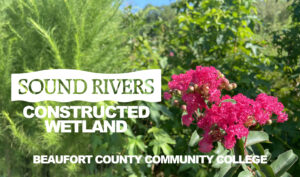Climate Change

It’s not an if. It’s a when. That’s how many people in our watersheds approach the idea of the next devastating storm.
In 2018, a category 1 Hurricane Florence made landfall just south of Wrightsville Beach, and in the days that followed, became one of the most devastating hurricanes on the North Carolina record.
Florence delivered up to 30 inches of rain in many places; freshwater flooding due to the torrential rain led to hundreds of people being rescued from homes farther inland; historic storm surge in New Bern and Washington did the same. More than 4,300 eastern North Carolina homes were damaged or destroyed. On the Neuse, Trent and Cape Fear rivers, 46 industrial swine and 35 poultry facilities flooded, sweeping tons of waste into local waterways, and coal ash spilled from the Neuse floodplain.
Just two years prior, Hurricane Matthew delivered similar destruction.
These two, 500-year storms hit North Carolina within a 23-month period.
This is climate change.
A key impact of climate change is more storms, wetter storms — not limited to hurricanes and tropical systems, but everyday storms. Magnified by sea-level rise, flooding from these storms is severely affecting just about every aspect of life. It destroys buildings, homes, land and crops, endangered species and critical habitats; disrupts business operations and economic activity; threatens our roads, resources and energy and water utilities. It results in more water pollution, highlights social inequalities and how difficult it is for rural, lower-income counties to adapt to a greater flooding threat.
And according to North Carolina Department of Environmental Quality’s Climate Risk Assessment and Resilience Plan, released in 2020, the state should plan for greater extremes in the future. We may not be able to stop the impacts of climate change, but what we can do is be more resilient to them.
Read the 2020 North Carolina Climate Science report on the N.C. Department of Environmental Quality website.
Ways We Can Be Resilient
Wetlands: protecting our wetlands is key to flood mitigation. Where levees and sea walls simply attempt to block incoming floodwater, wetlands naturally decrease destructive wave action, spread water out and ultimately filter the water, removing harmful pollutants.
Living Shorelines: constructing/restoring living shorelines means habitat is restored, our coast is protected from erosion and damage from storms, water quality is improved and recreational opportunities such as fishing, swimming and public access abound.
Swine Buyout Plan: in North Carolina, hogs outnumber people in 30 of our 100 counties, many of which are located in floodplains and on the banks of the rivers and creeks of eastern North Carolina. When it floods, there’s no place for those tens of thousands of hogs and their millions of gallons waste to go — except into the waterways. North Carolina has a Swine Buyout Program, intended to buy out those swine facilities in the floodplain, and the land used for other purposes such as growing crops. It’s a popular program that had 138 applications and a total of 43 facilities bought out until it was effectually halted. How? Funding for the Swine Buyout Program is continually removed from the budget during the North Carolina General Assembly’s budget negotiations.
Watershed restoration plans: Watershed restoration plans are an important element of resiliency. These plans identify pollutant sources and land-use changes in the watershed, and make of list of priorities that will restore habitat and water quality. Stormwater runoff reduction measures installed through watershed plans have been shown to greatly reduce bacteria and sediment in polluted runoff from storms.
Latest News

Wayne Community College wetland passes first test(s)
January 11th 2024

ACTION ALERT: NCDEQ permits need OUR input!
October 26th 2023

Riverkeeper introduced to aerial investigation
October 26th 2023

Neuse Riverkeeper goes on the record about CAFO pollution
October 19th 2023

Aerial tour reveals major Neuse pollution threats
October 5th 2023

Ophelia brings unexpected impacts
September 28th 2023

Washington gets a stormwater scouting
September 21st 2023

Sound Rivers team tracks Neuse fish kill
September 14th 2023

